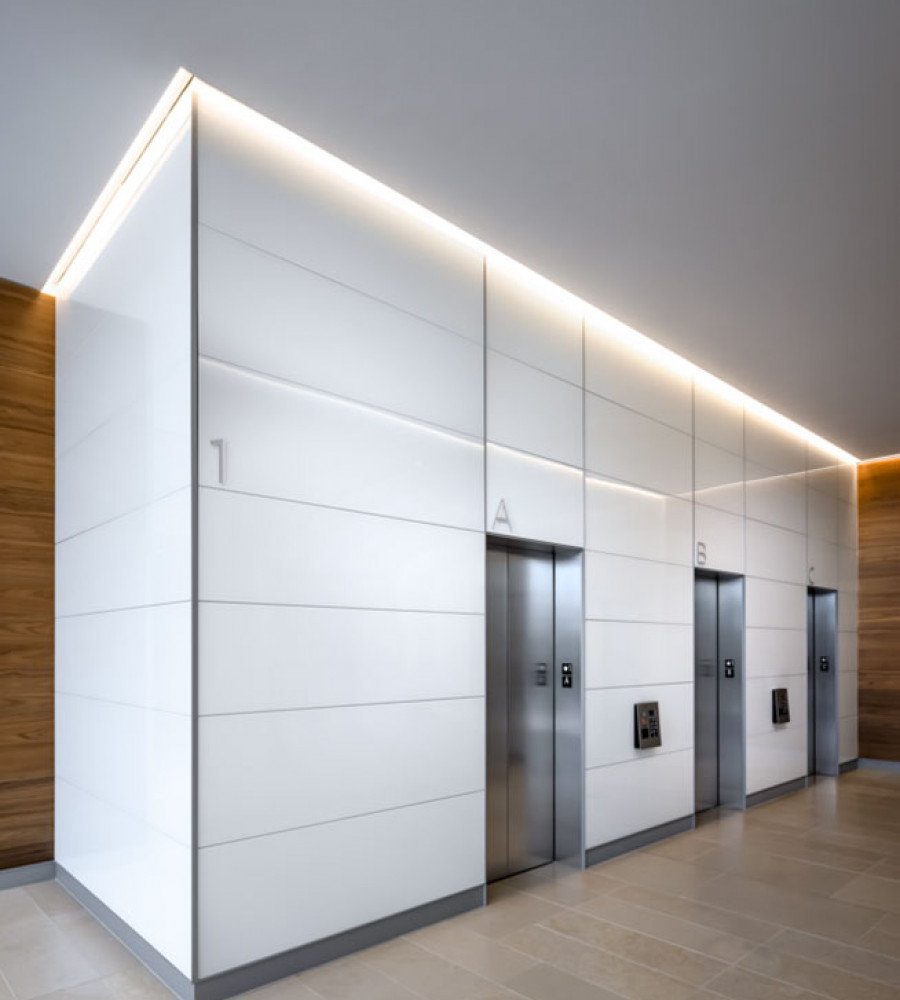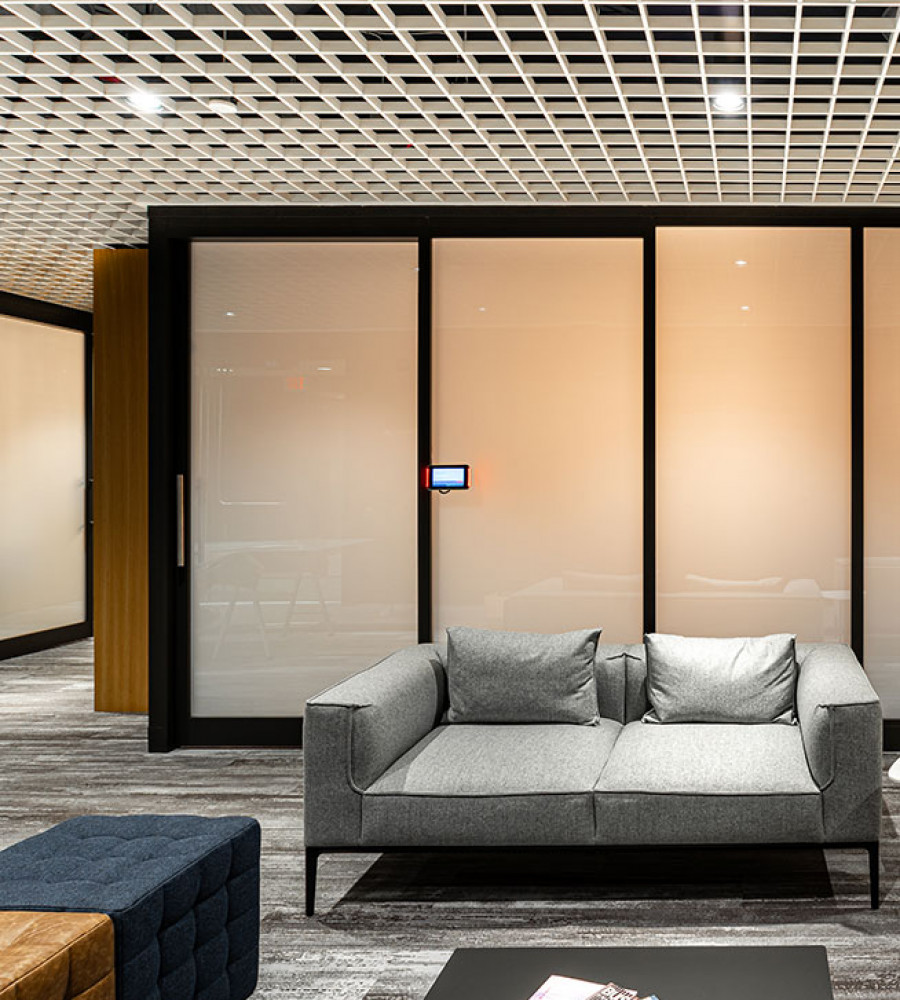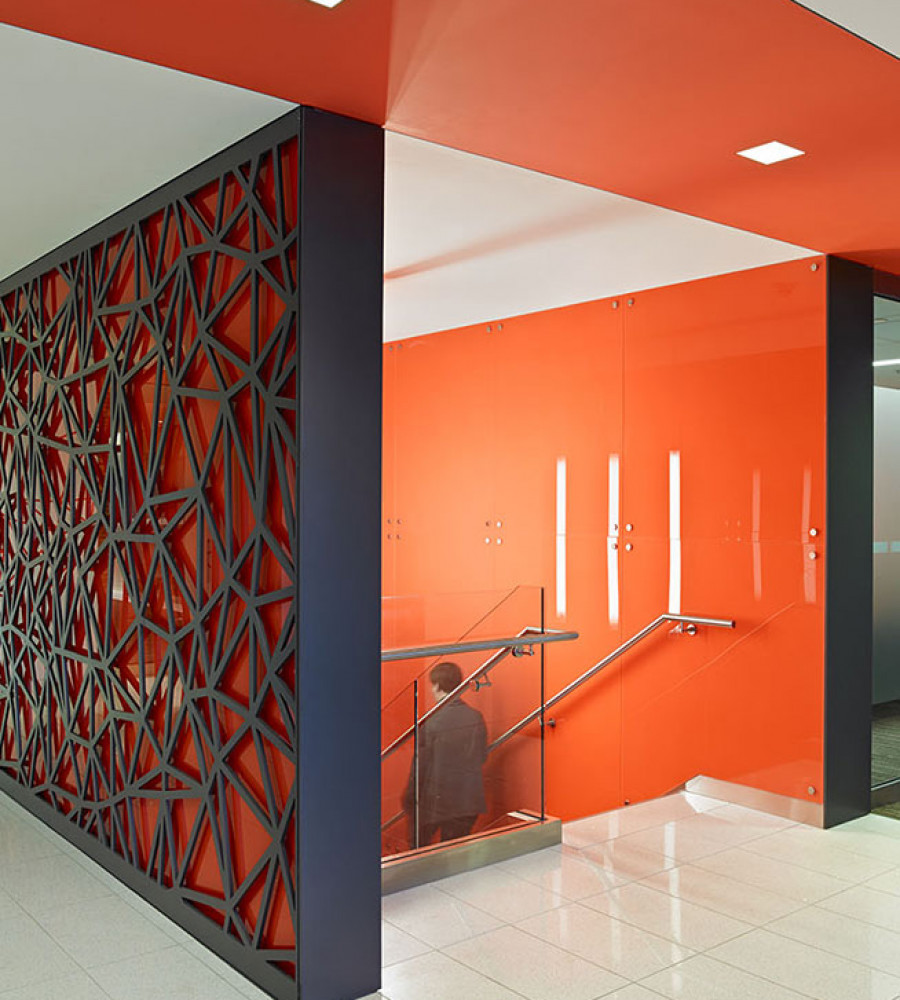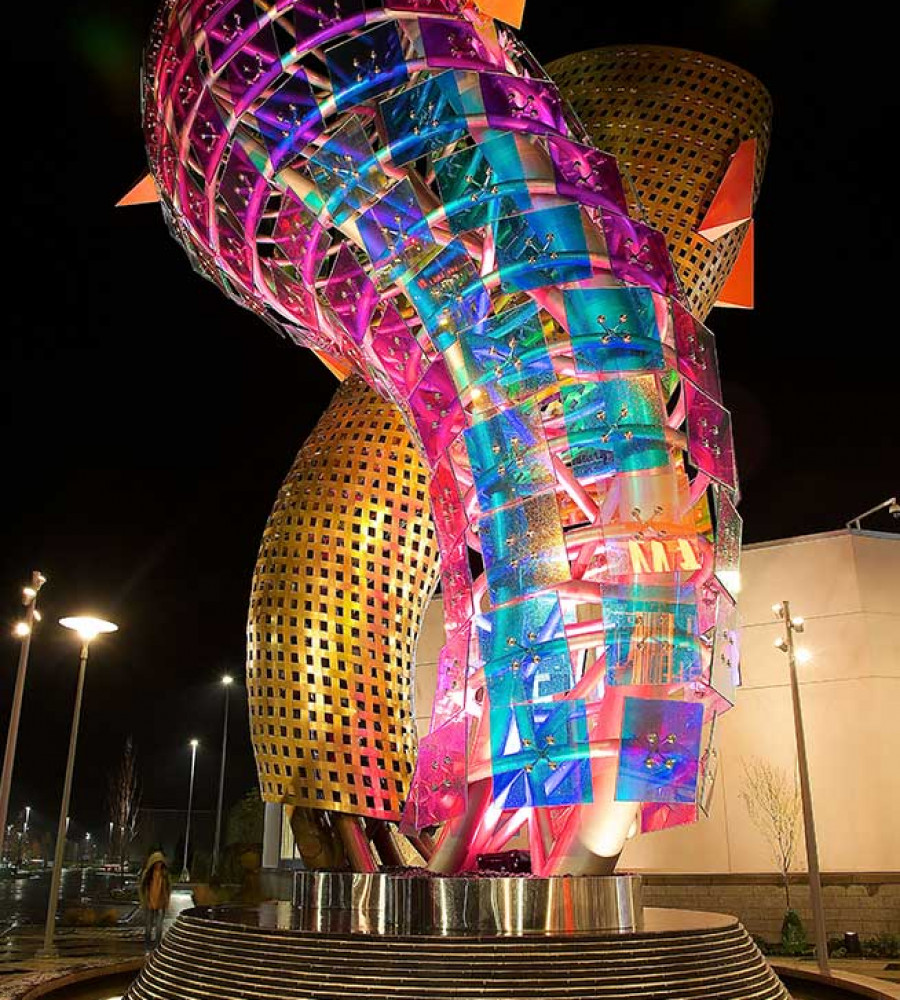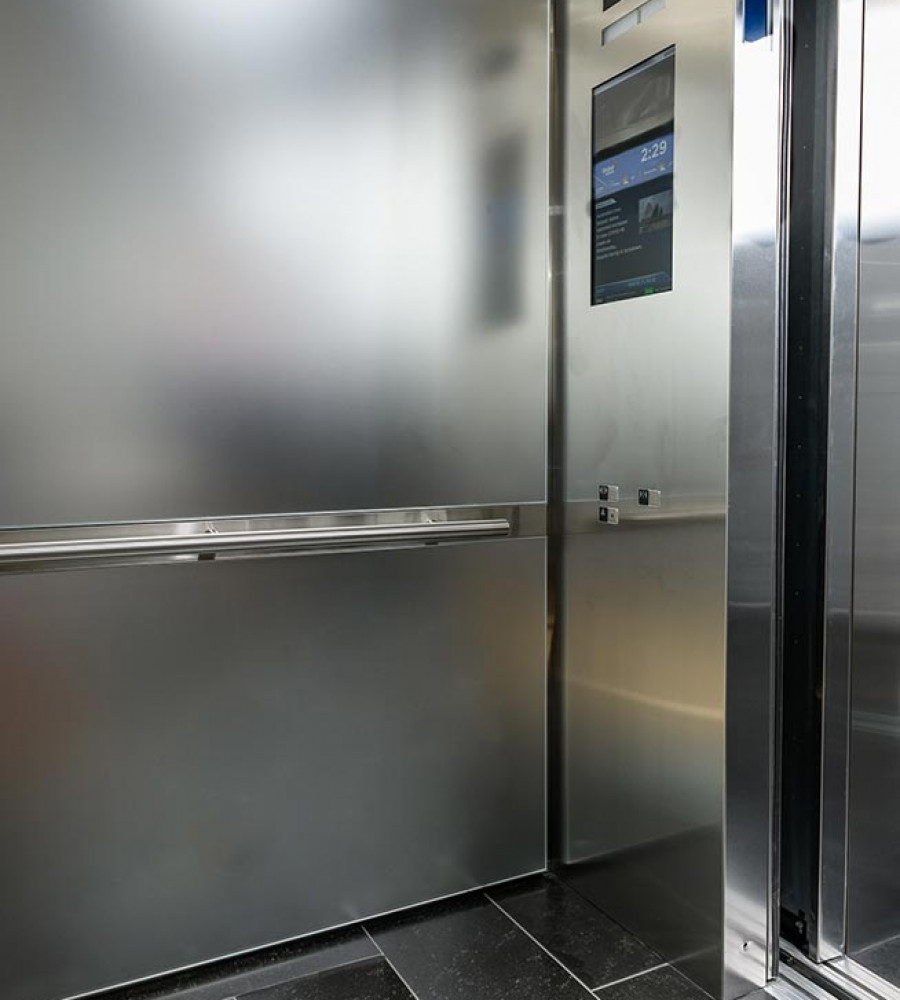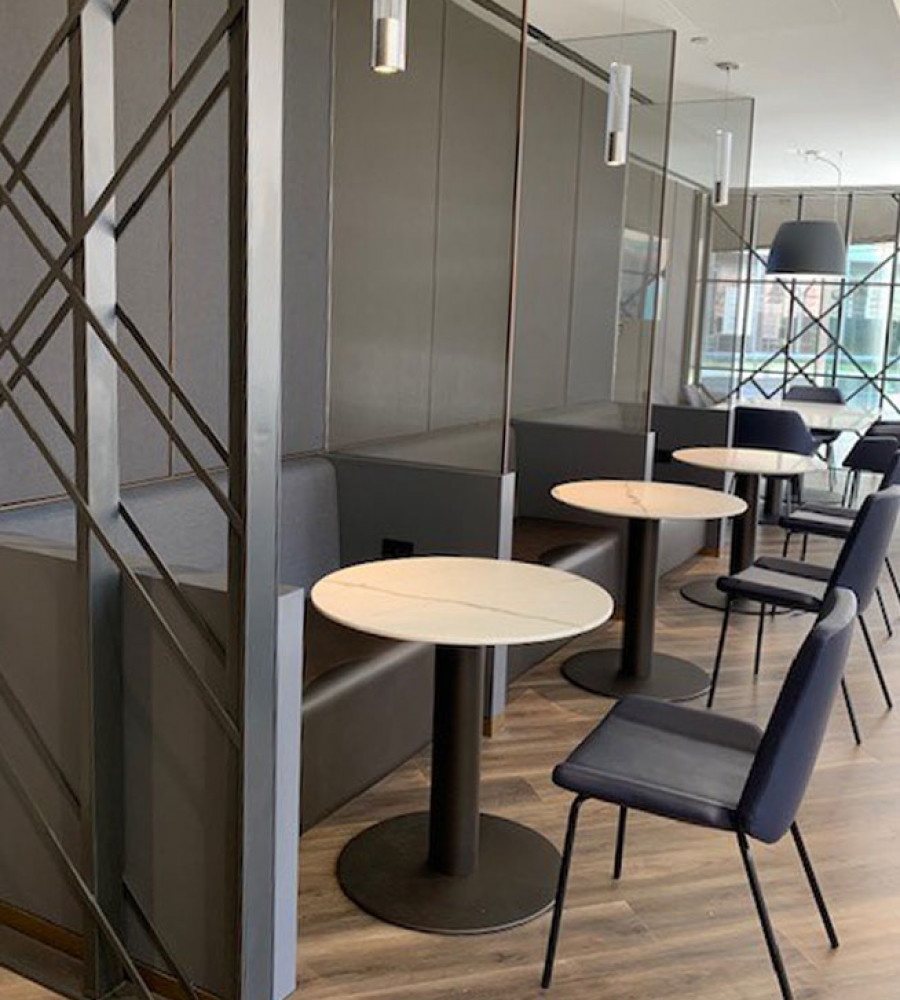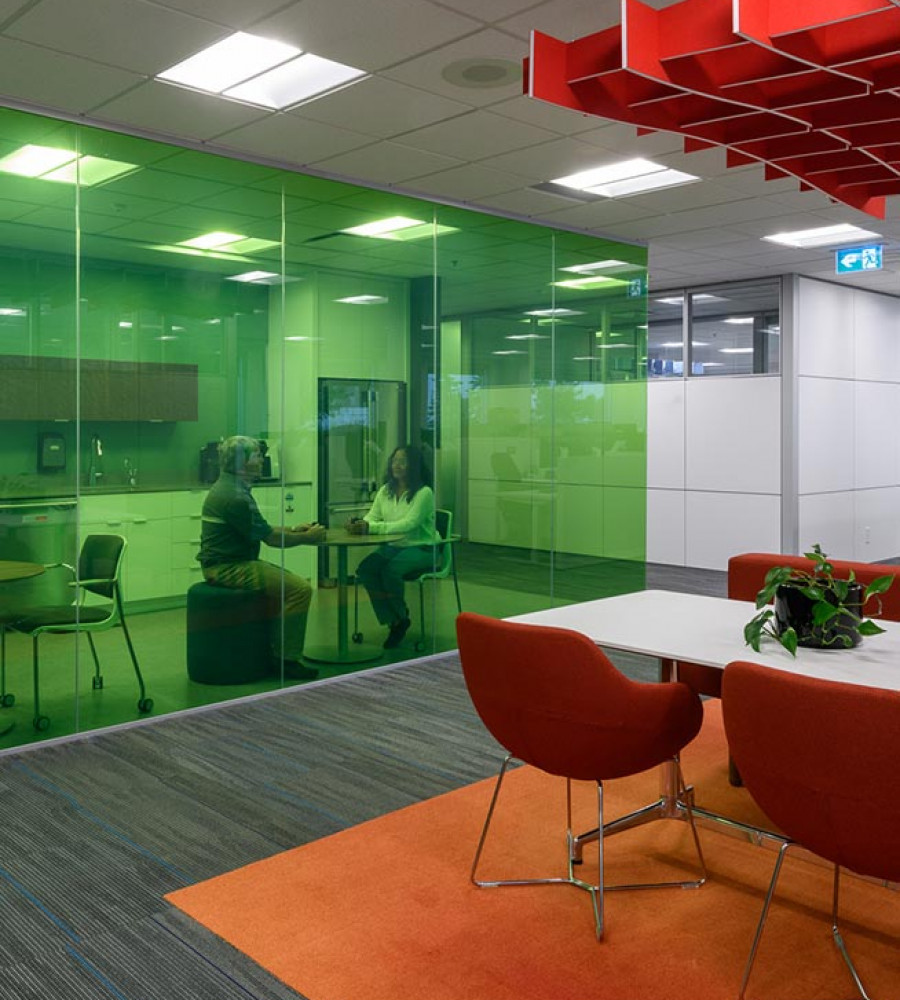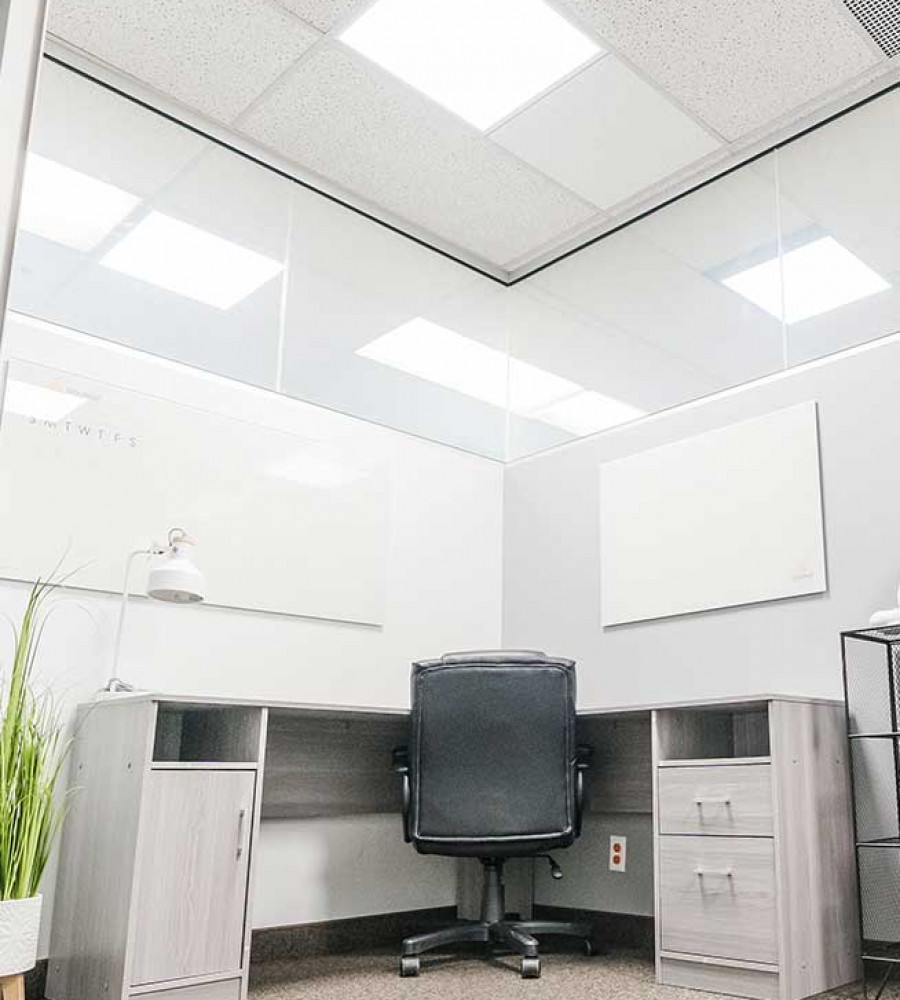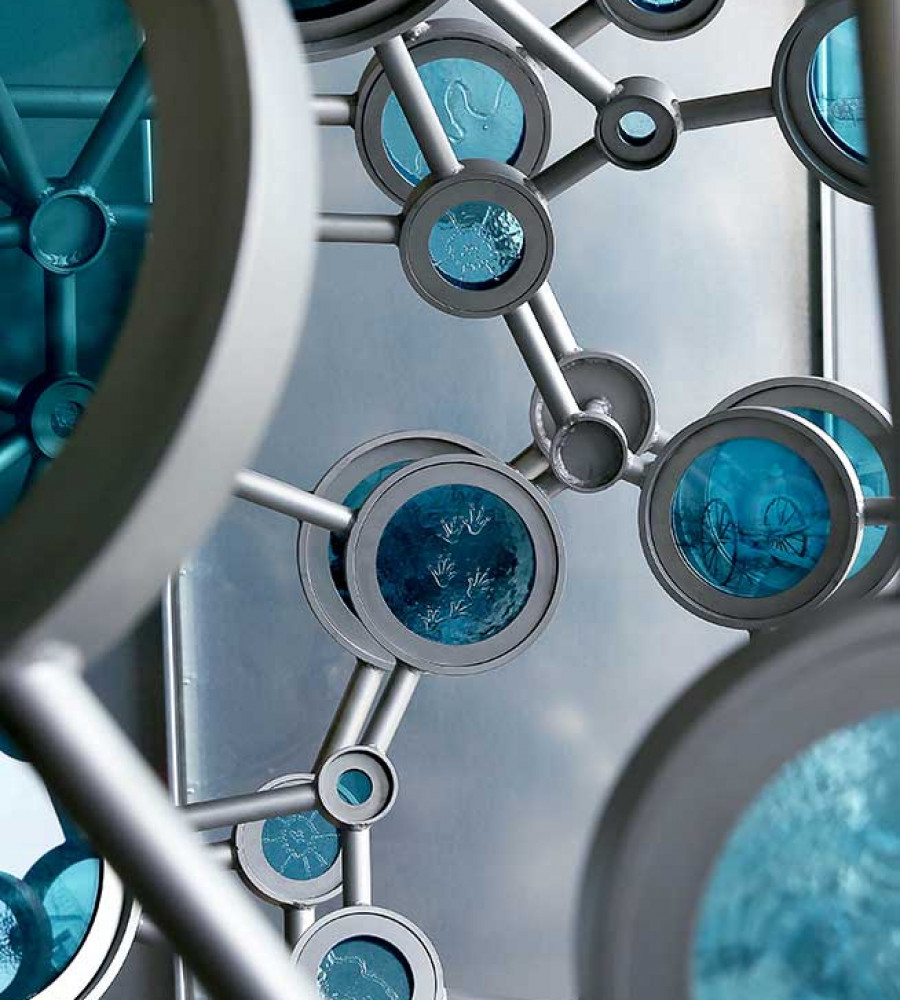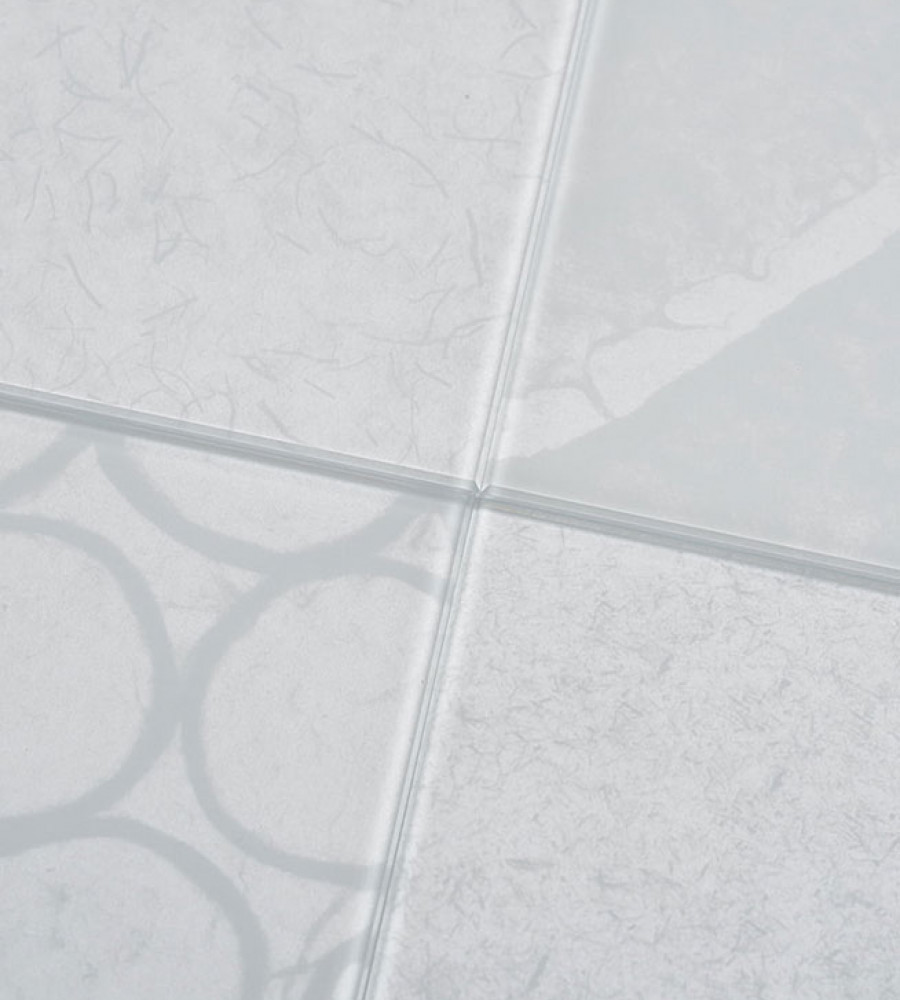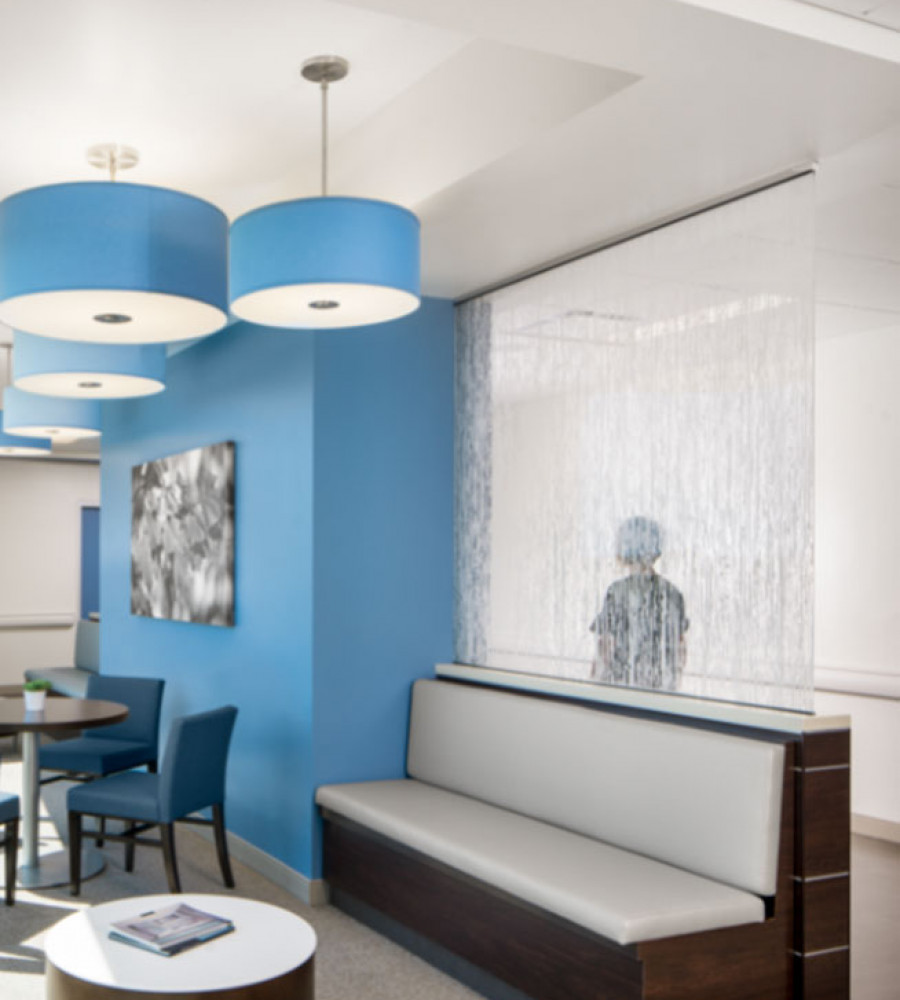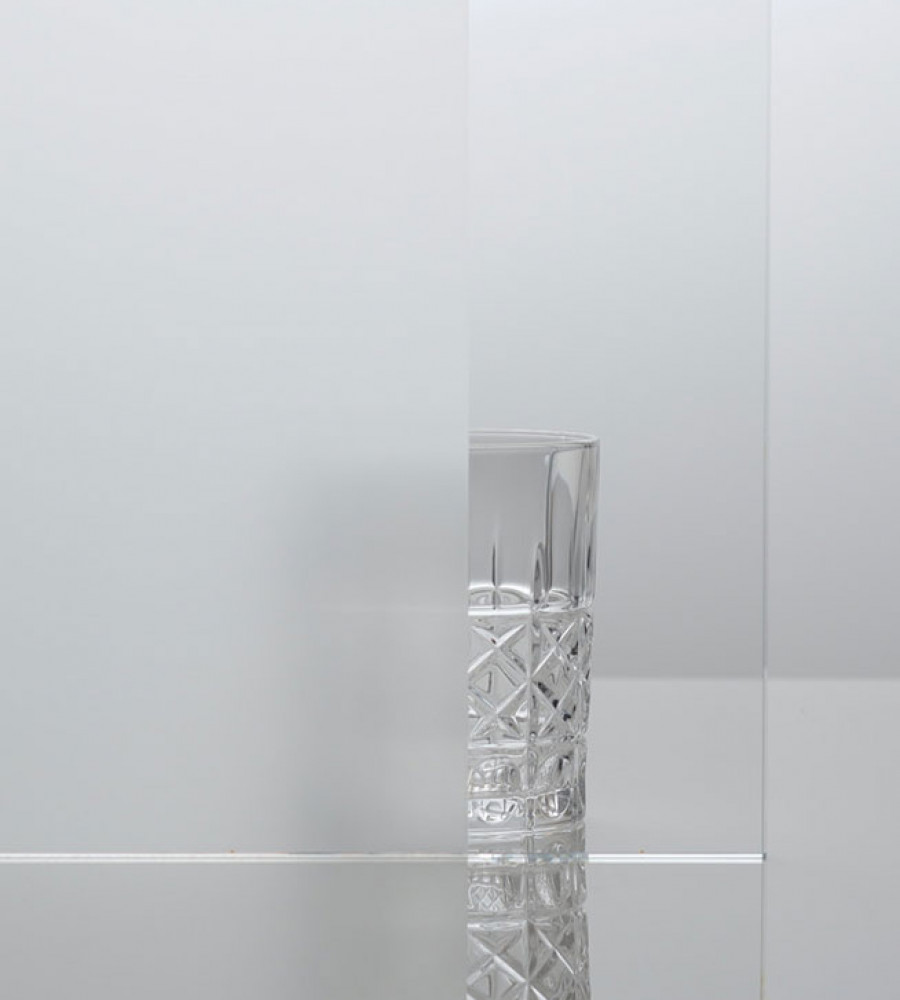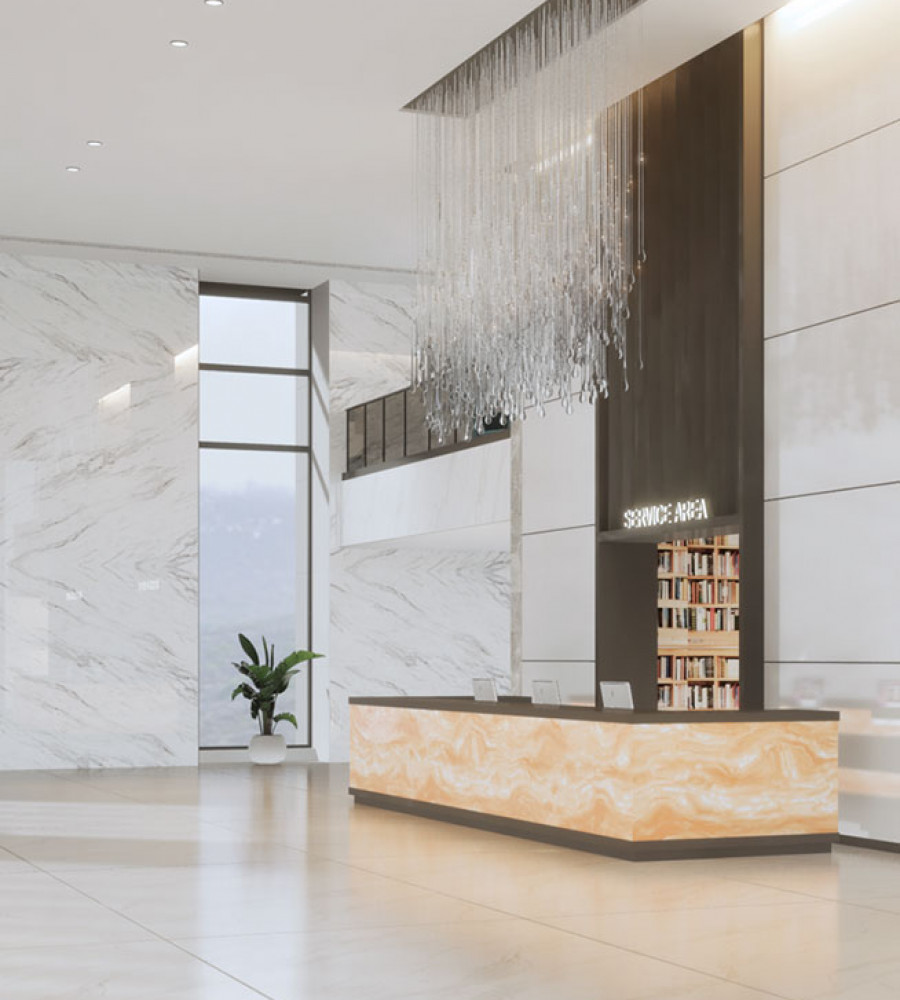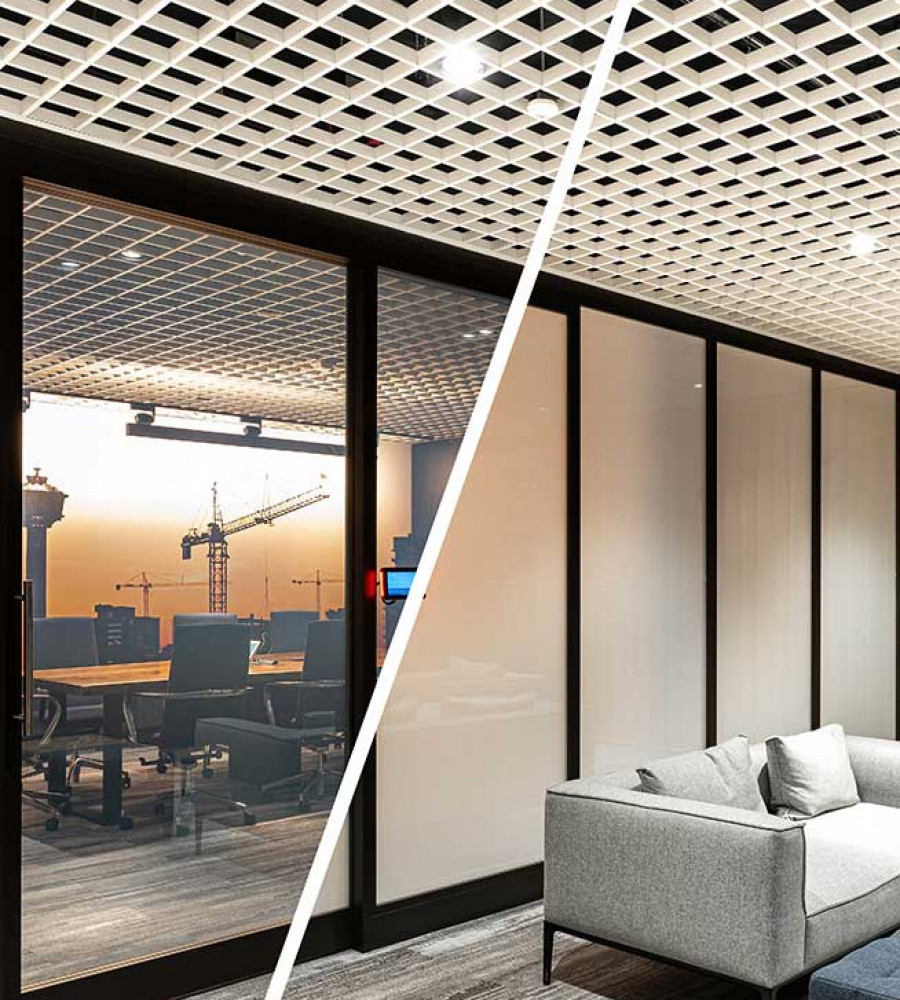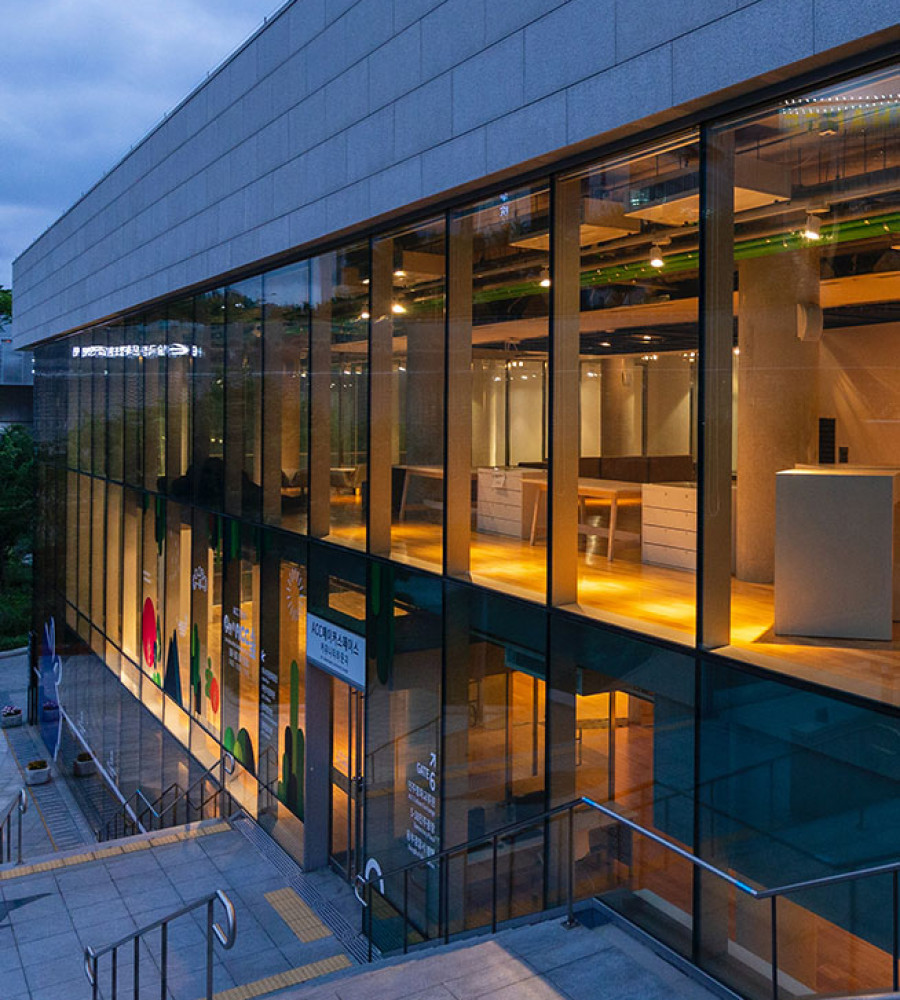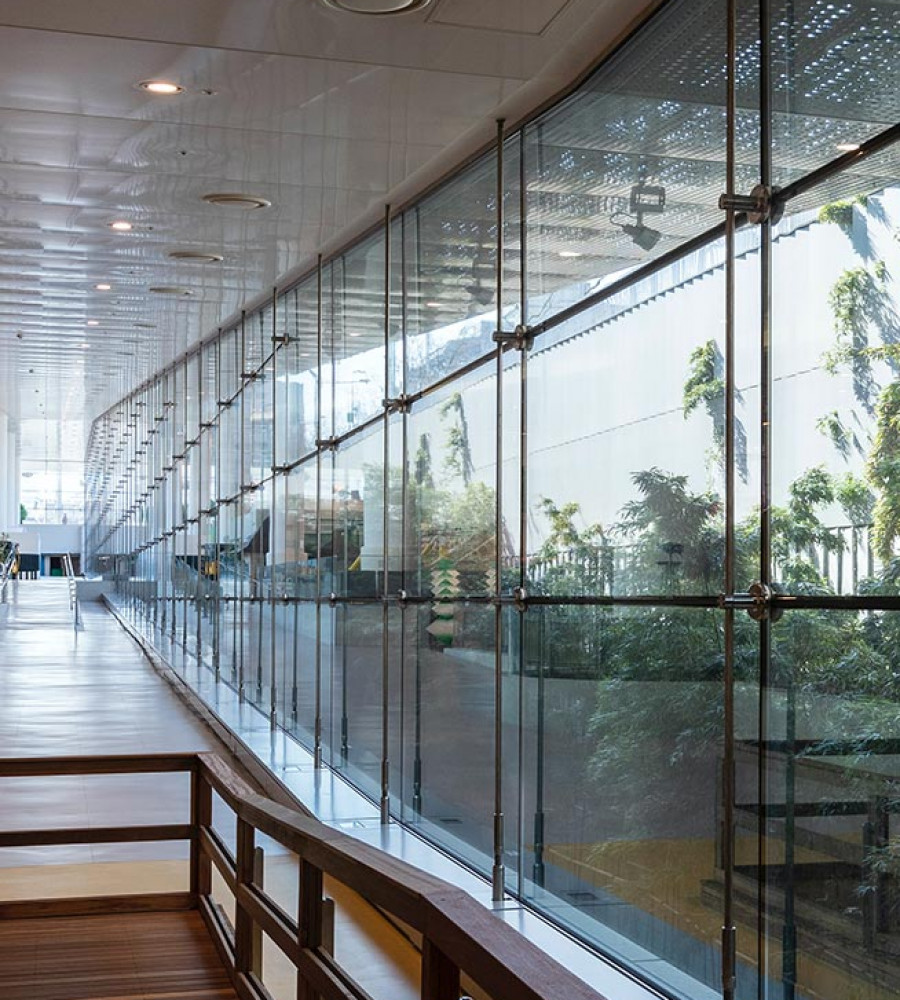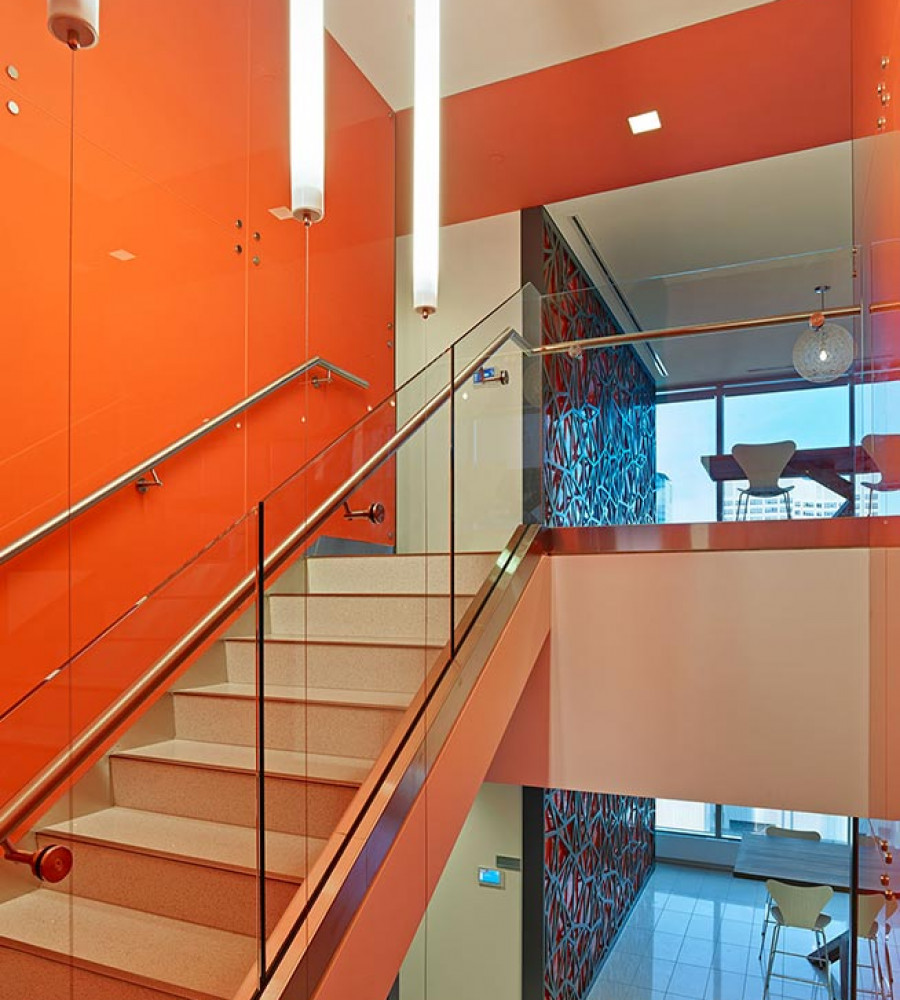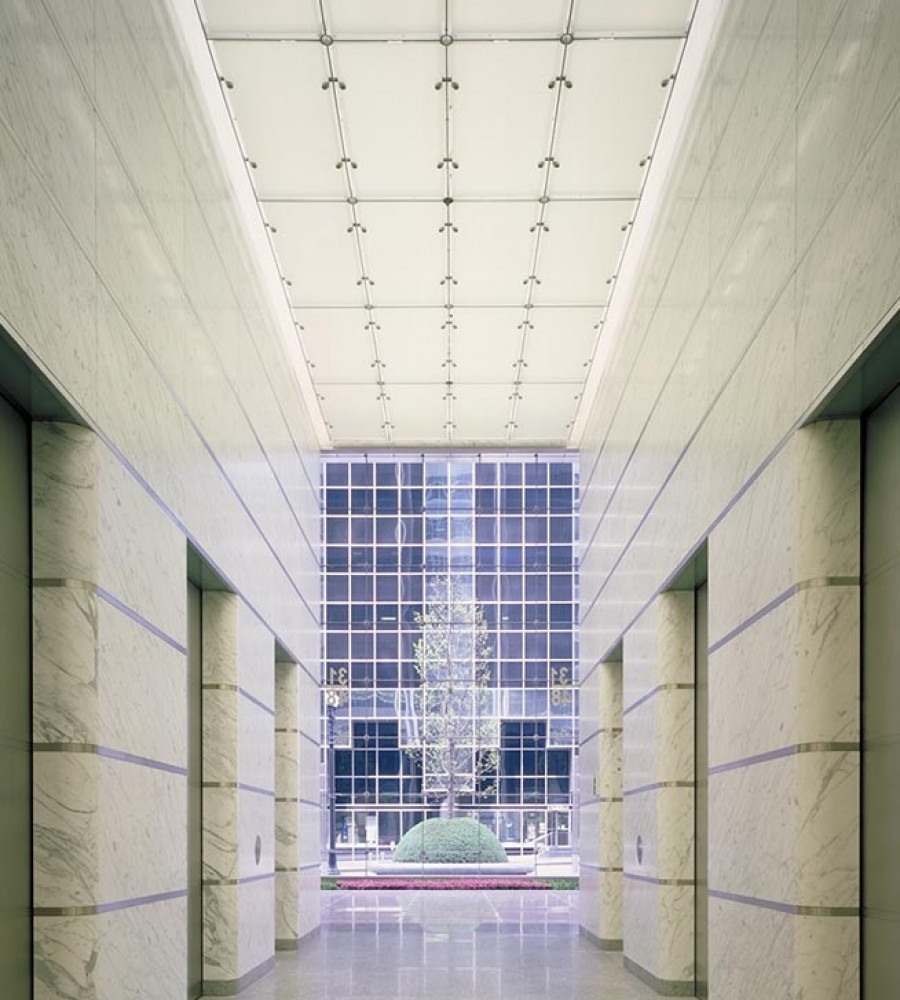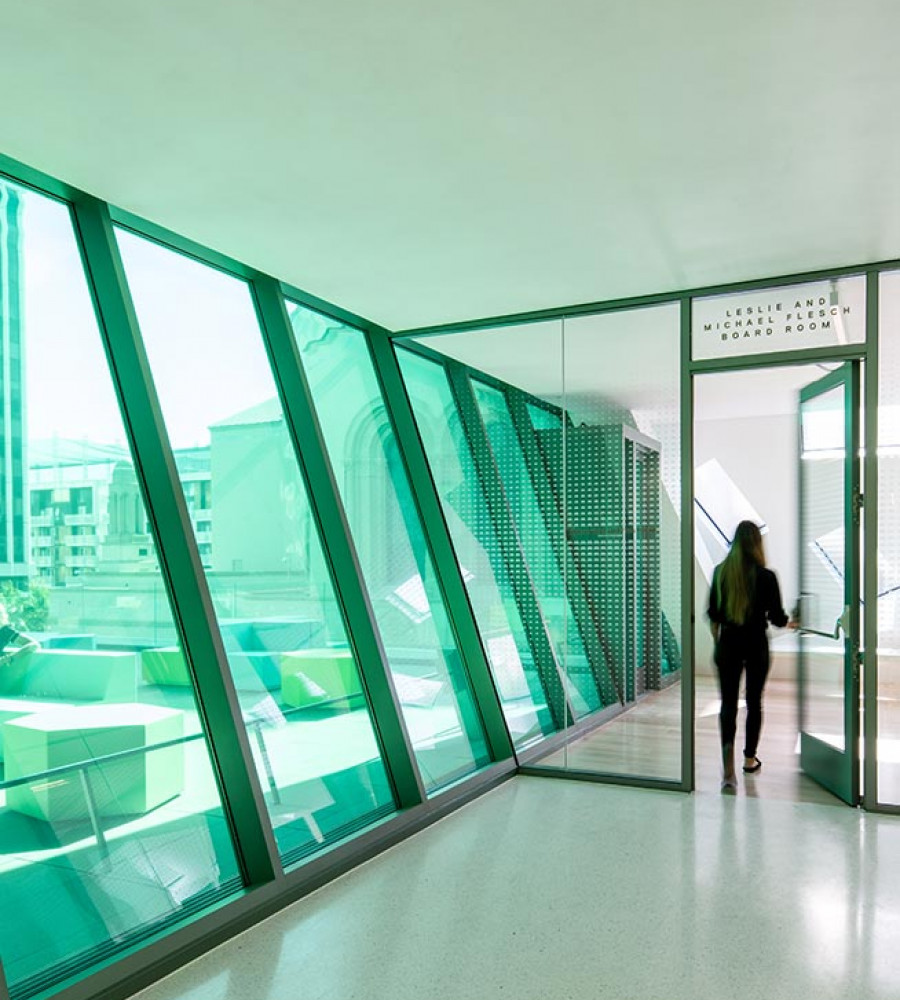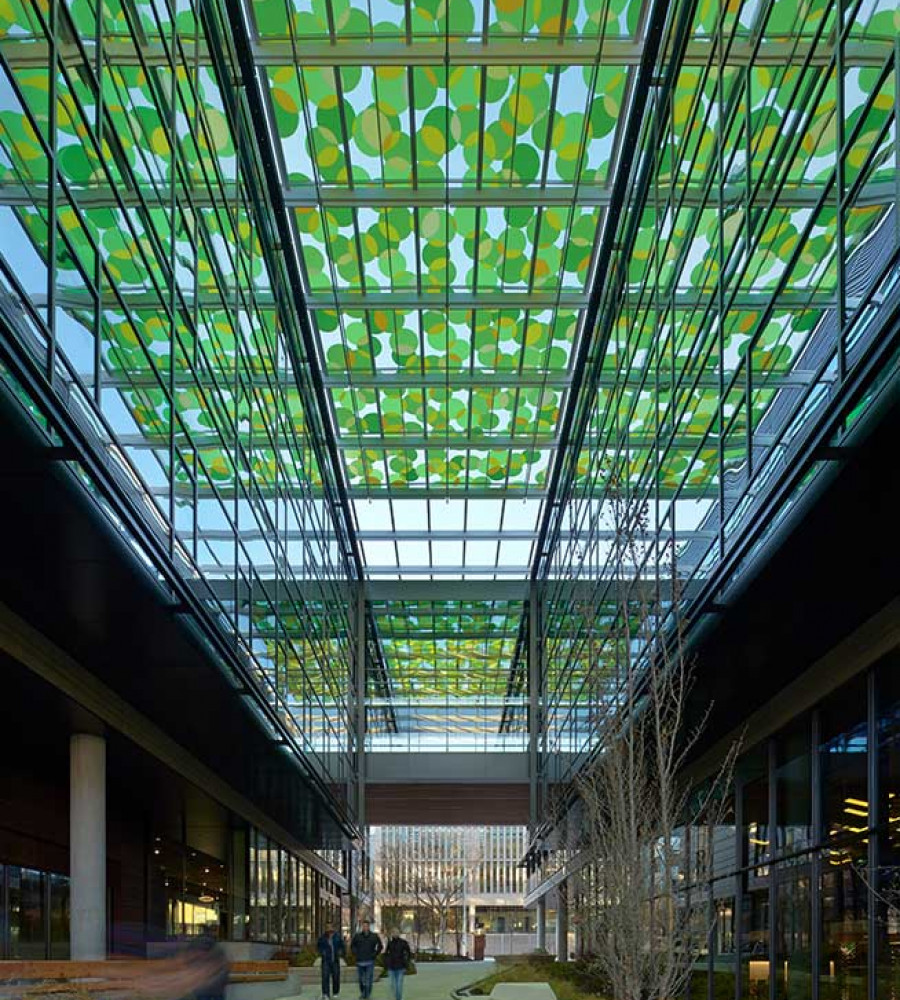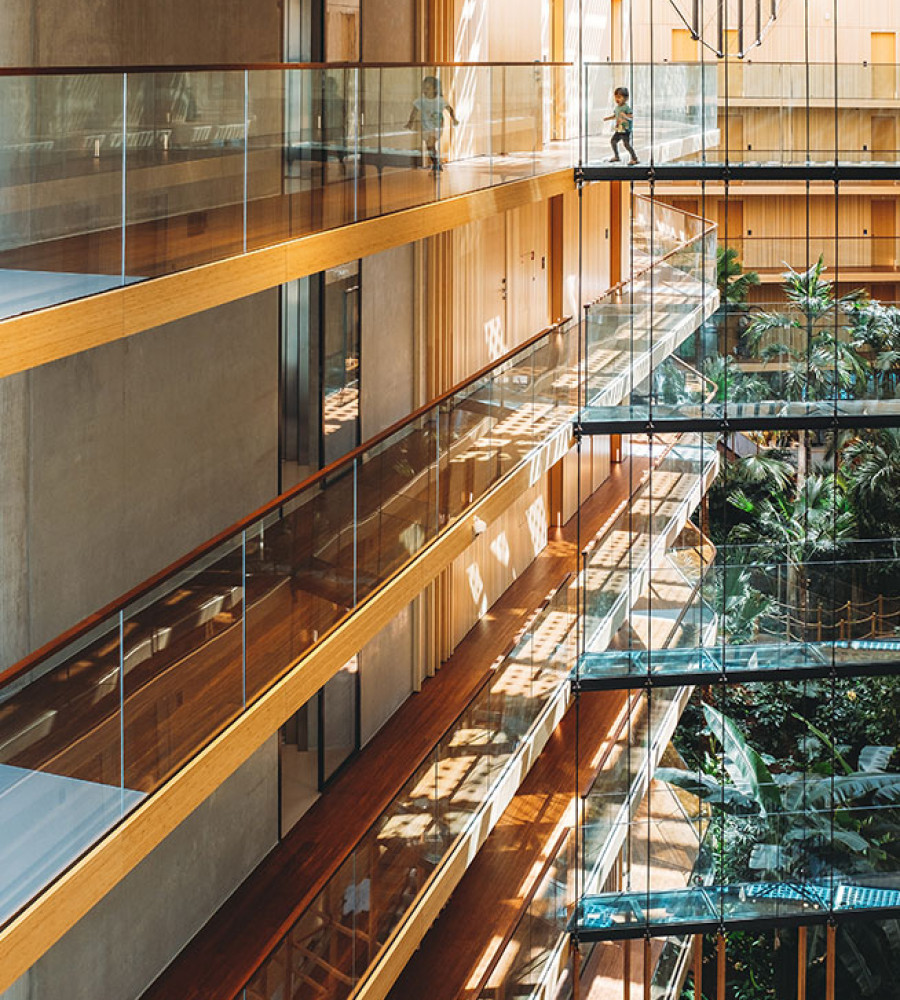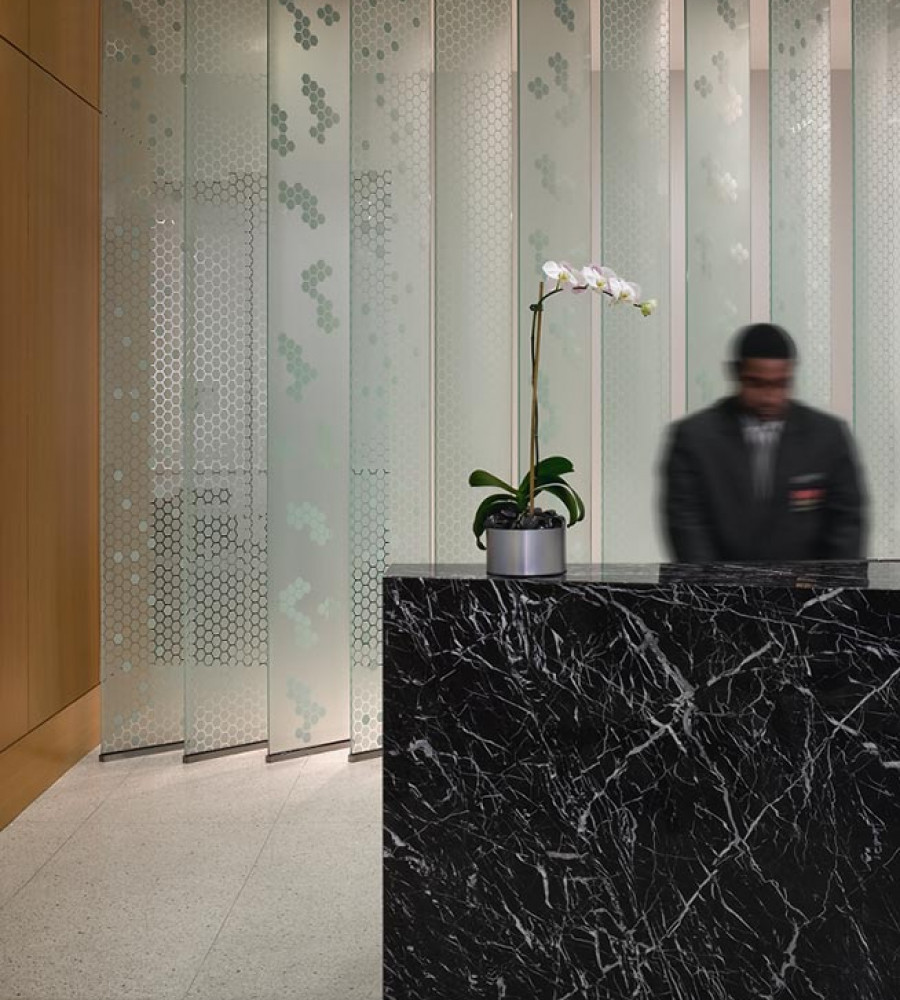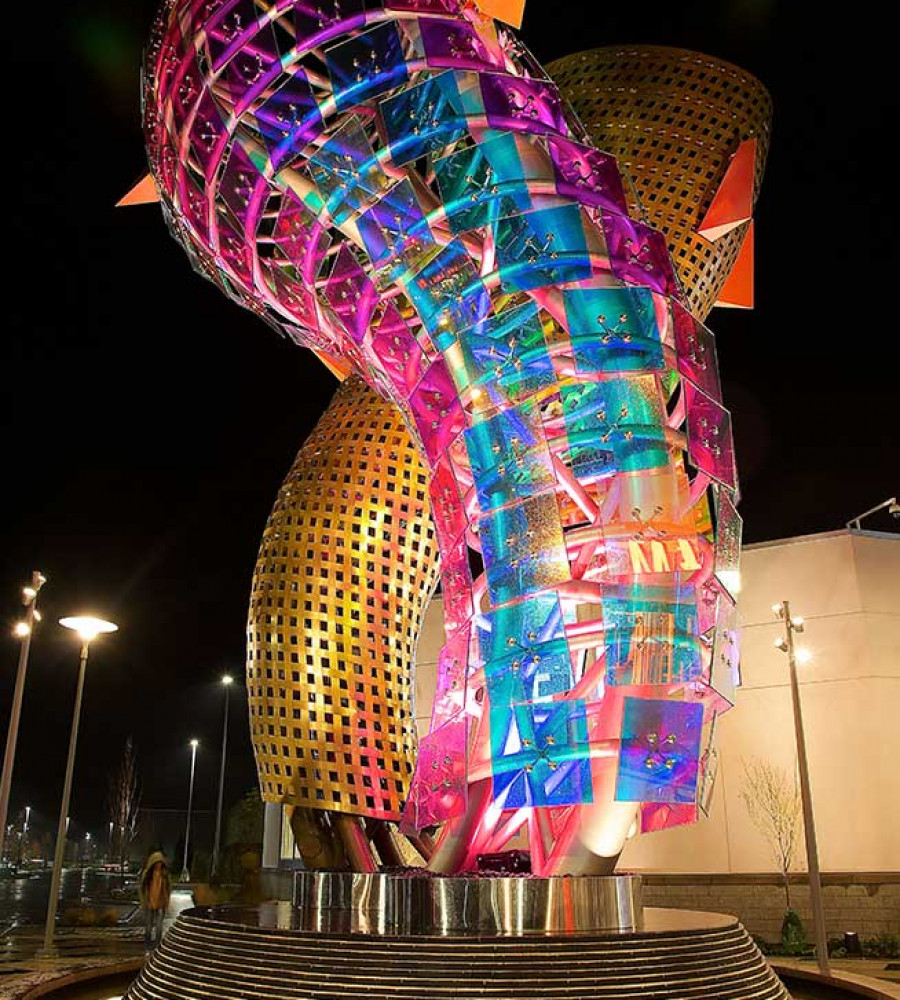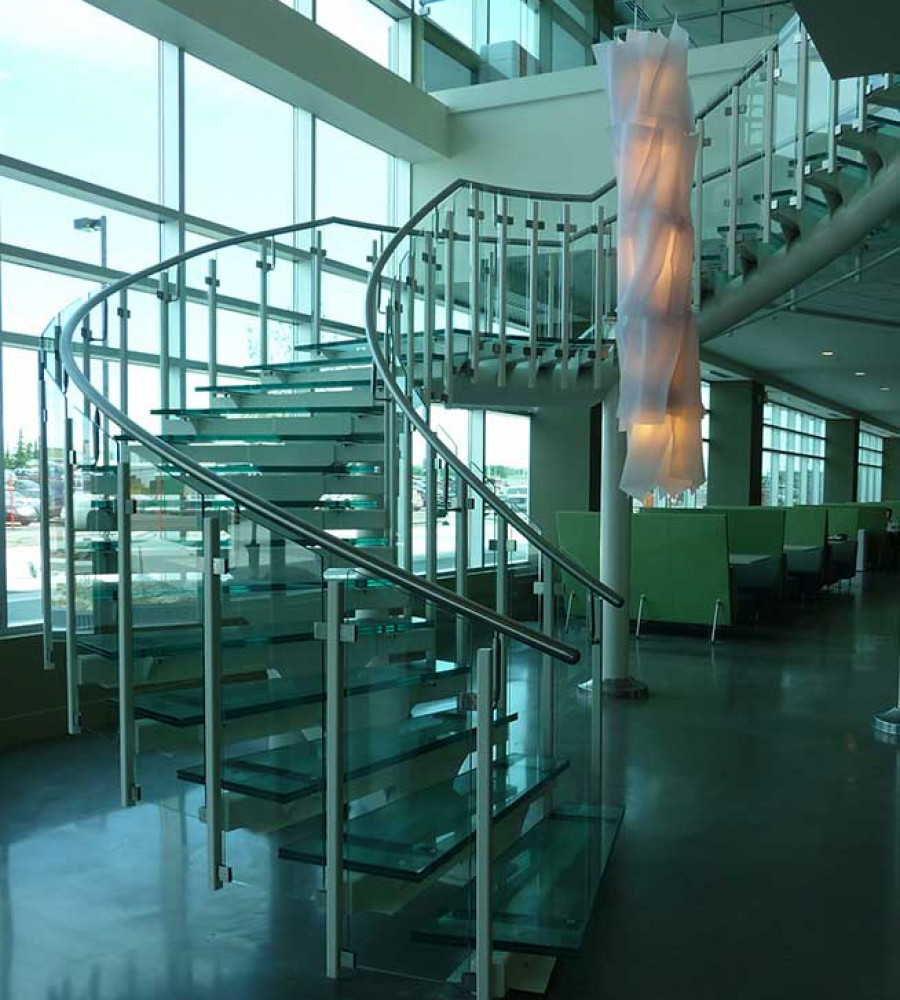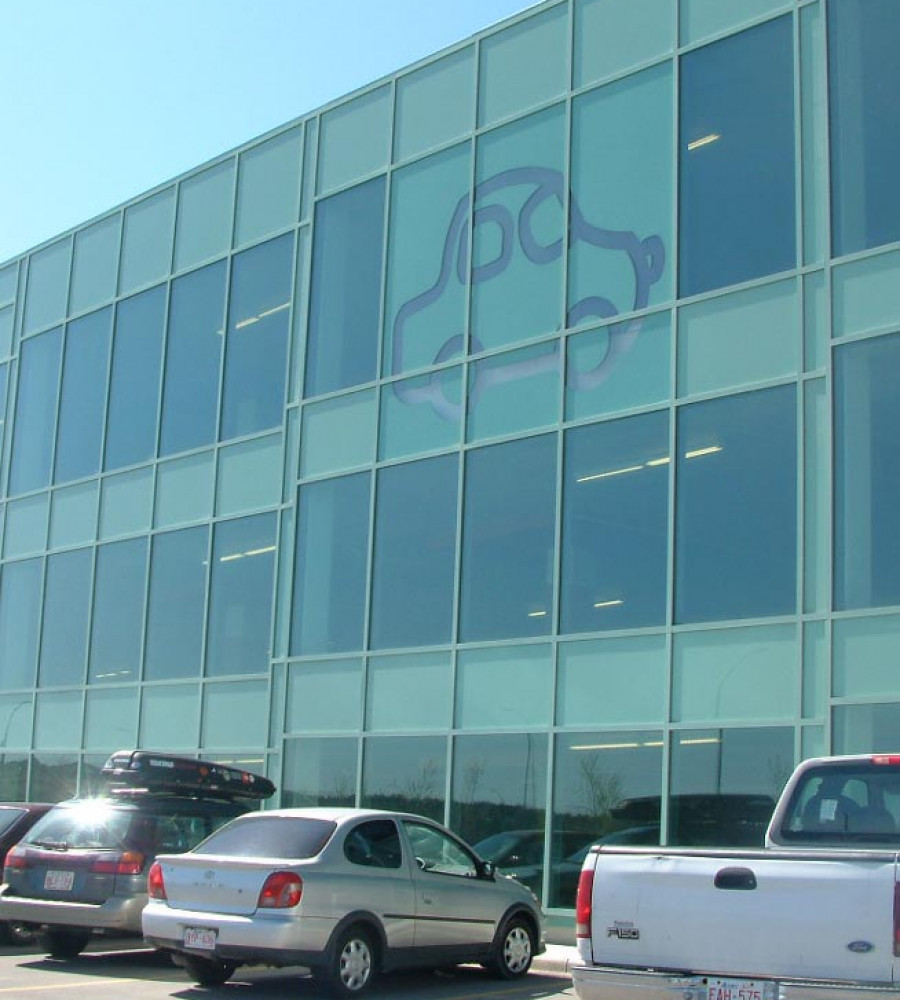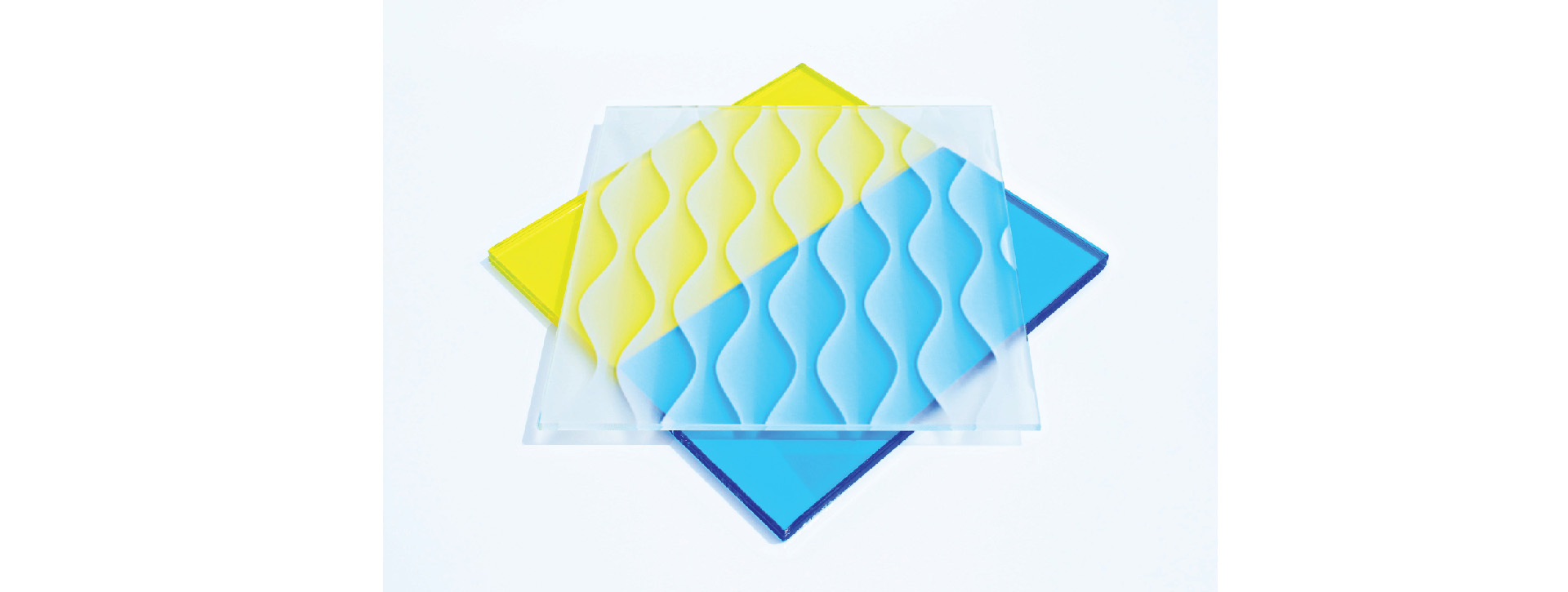Posted: 11 years ago
New Developments in Architectural Decorative Glass
Goldray Industries’ Research and Development Lab has been working on some exciting developments that will change the applications and specifications currently associated with architectural decorative glass.
“We have people working on the chemistry of both organic and inorganic glass coatings. They are fine tuning the chemical makeup to make sure that the performance and quality of the product is high,” explains Michael Saroka, Head of R&D at Goldray Industries. “We are collaborating with architects and finding out how they would like to use decorative glass in non-traditional applications.”
One such example of this innovation was the introduction of a ceramic frit that can be applied to the first surface of an exterior glazing installation. Ceramic frit is widely used in architectural decorative glass, but is traditionally applied to the second surface of glass in an exterior application as it is not durable enough to withstand the elements. Architects and designers wanted a product that was as diverse in design as it was durable, and so we sent it to the R&D lab. Goldray’s researchers came up with a specialized formulation of ceramic frit that has exceptional chemical, UV and weather resistance properties, enabling it to withstand the elements. First surface ceramic frit can also be used to reduce the glare that is typically found when glass is used on the exterior of a building. This development has enabled Goldray to produce Bird Friendly Glass. The glare and reflection that are created by glass make it difficult for birds to differentiate the obstacles in their flight path. Birds colliding with buildings is a significant problem, killing an estimated 1 billion birds per year, something that many architects are striving to rectify. “We love to hear unique and unprecedented requirements for decorative glass; we see that as a challenge to innovate a new product,” says Mike of Goldray’s bird friendly exterior glass.
Dichroic films are another product that solved a unique design and performance challenge. Prior to access to these films, the only option was dichroic coated glass. While it was a unique and colorful product, there were many limitations to using it. “When we began laminating a dichroic film between two pieces of glass, the design opportunities opened up. The colors were more vivid, the individual pieces of glass could be much larger, and there were less limits on the makeup of the glass,” Mike explains.
“We love the challenges,” said Roxie from the Sales and Marketing team. “New challenges brought to us translate to new products, which allows us to be creative and innovative”.
Goldray’s R&D team has also developed a ceramic frit that can be applied to both sides of the glass, something once thought impossible. This revolutionary advancement to the ceramic frit application process was developed in-house by Goldray’s innovative R & D team. Ceramic frit applied to both surfaces of a lite of glass allows for depth of pattern while still maintaining the durability and low maintenance of traditional ceramic frit. Bringing movement and depth to decorative glass without deviating from a monolithic installation is a major appeal to architects and glaziers alike and opens up a whole new level of design for architectural decorative glass.
Glass coatings that will withstand exposure to the elements, dichroic laminated glass and double sided ceramic frit capabilities-- these are just a few of the new innovations in architectural decorative glass that are all motivated by challenges posed to us by our architects, designers and customers. Our innovation truly is inspired by your creativity.

